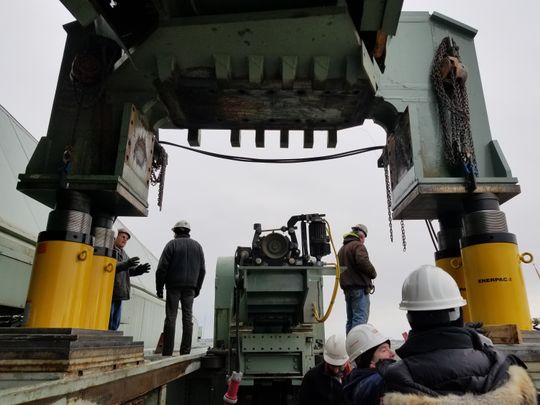
- Contact:Minister Xu
- Mobile:13841408476
- Tel:024-44837288
- Fax:024-44837004
- E-mail:xuming58@126.com
- Web:m.ainvrui.com
- Address:No.110 XiangHuai Road
Benxi Economic Development Zone
Liaoning Province
Giant crane removes a key piece of Miller Park roof to replace a bearing that makes odd noise
14 Nov,2018

Workers jacked up a part of the Miller Park roof Monday and removed one of the bogies — the powerful engines used to open and close the massive structure.
The work is part of a $900,000 project that combines routine maintenance with an investigation into an odd "clicking" sound coming from one of the bearings on the bogie.
The clicking could be heard every time the enormous roof was moved, and the stadium district and Milwaukee Brewers decided it was time to replace the bearing and determine what was causing the noise.
"They wanted a chance to better diagnose and understand the issue," said Mike Duckett, executive director of the Southeastern Wisconsin Professional Baseball Park District, the public body that oversees the stadium.
"The bearing has been 'clicking' for about a year now — more noticeable in warmer weather. We do not believe the 'clicking' is anything significant."
Removal of the bogie was a daylong undertaking. The engine was taken apart into two large pieces. A crane then lifted the machinery off the track and lowered it 120 feet down to the plaza outside the left field wall.
Two lifts were required — one portion of the engine weighs 32 tons and another, the engine's drivetrain, weighs 34 tons, The second lift was completed by about 3 p.m.
The bogies are the crucial workhorses of the Miller Park roof, the most important feature of the 17-year-old stadium.
The balky bearing is one of 80 such pieces of equipment that ensure smooth operation of the 12,000-ton roof. There are eight bearings on each of the 10 bogies used to move the five roof panels.
This is the first in-depth work performed on the bogies since they were all replaced in 2006.









